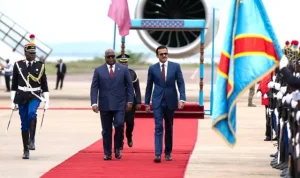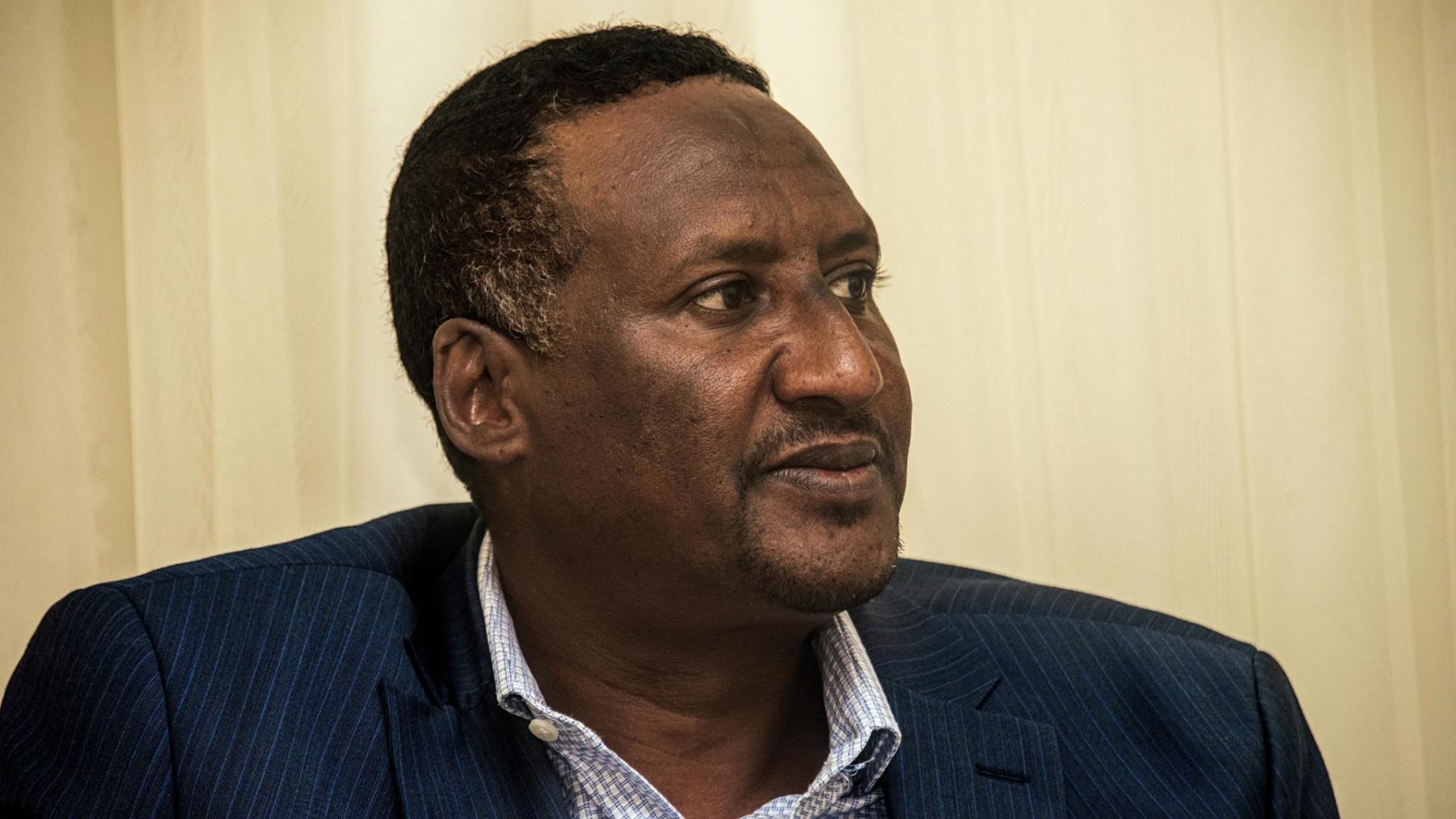Adesewa Olofinko: US and China tariff war’s effect on Africa

In the current trade conflict between the US and China, the most misunderstood player isn’t China or the US — it’s Africa. And that’s no coincidence. Too often, the continent is treated as a pawn in global power games, rather than a collection of 55 member states navigating layered and often competing interests.
How it started
What began as a tariff spat driven by US President Donald Trump has evolved into something far more consequential. Trump says tariffs will encourage US consumers to buy more American-made goods. Economists, however, suggest that the consequences could be economically catastrophic and trigger a global recession.
On Wednesday, April 2, 2025, Trump announced a 10 percent baseline tariff on all imports into the US from all countries, with higher rates for those with trade surpluses with the US.
These sweeping measures, which took effect on April 9, are part of what Trump called a strategy to promote “economic independence” and reduce the US’s trade deficit, particularly with major players like China and the European Union.
This staggering tariff on the world’s second-largest economy immediately triggered a tit-for-tat trade war. China responded by announcing its own 34 percent duties on US goods, deepening a showdown between the world’s two largest economies.
The swift retaliation from China sparked a fresh warning from Trump who imposed a 125 percent charge designed to both counter America’s trade deficit with China and punish Beijing for retaliating against US import taxes. China in turn adjusted tariff measures on imports originating in the United States from 84 percent to 125 percent.
Prior to 2025, the average import taxes charged by each side were less than 20 percent, even after the first trade war in Trump’s previous term in office. However, they now stand at an average of 134.7 percent, more than 40 times higher than before Trump kicked off the first trade war in 2018.

Africa: the silent casualty
Though Africa wasn’t a primary target, it has become collateral damage in this clash of titans. In April 2025, Trump imposed a minimum 10 percent tariff on imports from most African countries, with Nigeria facing a 14 percent rate. This move disrupts existing trade agreements like the African Growth and Opportunity Act (AGOA), which, since the year 2000, has provided duty-free access for 1,800 products from Sub-Saharan African countries. In addition, over 5,000 products also enjoy duty-free access under the Generalized System of Preferences (GSP) program.
AGOA, set to expire in September 2025, has been a longstanding pillar of economic cooperation between the US and African nations. Many of its beneficiaries are low-income countries facing unsustainable debt levels or those at risk of debt distress.
Tariffs are taxes governments place on imported goods, which are calculated as a percentage of a product’s value. For example, with a 10 percent tariff, an imported product priced at USD 10 would cost USD 11 after the tax is applied. In cases where the tariff is significantly higher, like the 145 percent rate on select Chinese imports, that same USD 10 item could jump to USD 24.50.
In Africa, the countries most vulnerable to these new tariff regimes are Lesotho, Mauritius, and Madagascar. All three are small, low-income countries that export apparel. Lesotho, in particular, faces a 50 percent tariff, the second-highest rate globally after China. Nigeria faces a 14 percent rate and South Africa 30 percent.
Under the new tariffs, energy exports such as oil, gas, and petroleum are exempt, offering some cushion to countries like Angola, Chad, the DRC, Ghana, and Nigeria, which are major oil, gas, and petroleum exporters. Additionally, the US is a relatively small export market for most AGOA countries, as nineteen of them send less than four percent of their total exports to the American market. However, for those who are reliant on apparel exports, the impact could be severe.
“Though Africa wasn’t a primary target, it has become collateral damage in this clash of titans.”
The fallout for Nigeria
In 2022, two-way trade in goods between Nigeria and the US totaled over USD 8.1 billion, making Nigeria the second-largest US export destination in Sub-Saharan Africa. The exports to Nigeria primarily include vehicles, wheat, machinery, fuels, and plastics. By 2024, Nigeria exported USD 5.7 billion worth of goods to the US and imported USD 4.2 billion in return, leaving the US with a trade deficit of USD 1.5 billion.
In 2016, Nigeria implemented an import ban on 25 different product categories in agriculture, pharmaceuticals, beverages, and consumer goods as part of efforts to control imports and stimulate local production. Some of the banned items include poultry, pork, refined vegetable oil, sugar, cocoa products, spaghetti, beer, and certain medicines.
Trump claimed he implemented the tariff on Nigeria’s exports to the United States because Nigeria’s import restrictions on 25 American product categories created trade barriers between the two countries.
According to a fact sheet released by the United States Trade Representative (USTR) on X (formerly Twitter), restrictions on items like beef, pork, poultry, fruit juices, medications, and spirits by Nigeria, limit US market access and reduce export opportunities.
While the Trump administration says the measures are intended to protect American jobs and industries, the new USTR campaign highlights a growing list of grievances with global trade partners.
Meanwhile, Africa’s daily trade with the US is not insignificant. In 2024, total trade volume was an estimated USD 71.6 billion, with countries like South Africa, Nigeria, and Kenya among the top African exporters of products like oil, textiles, and agricultural produce.
China’s influence and the challenge for Africa
While the US is busy trading tariffs with Africa, China is trading influence on the continent. Through its Belt and Road Initiative, China has cemented its presence in over 40 African countries. According to the Chinese Loan to Africa Database, China has financed over 1,000 projects on the continent since 2000.

But what does this mean for Africa? Debt, yes. But also dependency.
Critics argue that while these deals are wrapped in the language of mutual growth, it is a trap that can impede economic growth and development. In 2017, Sri Lanka handed over its Hambantota port to China on a 99-year lease after failing to repay loans. Several African countries are on similar timelines. In Uganda, a USD 200 million loan from China to upgrade Entebbe Airport came with strict repayment terms, including control over an escrow account.
Historically, tariff wars are not new. The most infamous example is the Smoot-Hawley Tariff Act of 1930, where the US raised tariffs on over 20,000 imports — a move that worsened the Great Depression and led to global retaliations. The lesson? Tariff wars often trigger recessions, not solutions.
Earlier in the year, Angola announced plans to limit import licenses for beef, pork, and poultry starting in July 2025. As the ninth largest market for US poultry exports globally and the largest in Africa, the United States has warned that this move could disrupt over USD 130 million in American poultry exports. Under the new rules presented by Trump, Angola now faces a 32 percent tariff on its products, compared to the average customs duty rate of 11 percent.
Africa is standing at a strategic crossroads. In 2018, the Agreement establishing the African Continental Free Trade Area (AfCFTA) was adopted by the 10th Extraordinary Session of the African Union (AU) Assembly in Kigali, Rwanda. Established to create “one African market,” AfCFTA is the largest free-trade area by number of member states — 54 countries — representing a combined GDP estimated at USD 3.4 trillion and a population of 1.3 billion people.
READ: Oussama Romdhani: Maghreb suffers at the hands of tariffs and global unrest
With AGOA’s uncertain future, mounting trade restrictions, and burgeoning debt traps, it remains to be seen whether African nations will finally lean inward to trade more with themselves or whether they will remain on the sidelines auditioning for a pick-me role in the grand theatre of global affairs.
The views expressed in this article belong to the author and do not necessarily reflect the editorial policy of Maghrebi.org. Adesewa Olofinko is a multimedia journalist and documentary filmmaker specialising in covering underreported issues on gender, African history, international politics, and social change. She founded BlackLadyWriter.com in 2019 to demystify feminism in the African space. Her experience spans writing and producing for television, radio, and podcasts across Africa. She is a 2023 African Union Media Fellow.
If you wish to pitch an opinion piece please send your article to alisa.butterwick@maghrebi.org.
Want to chase the pulse of North Africa?
Subscribe to receive our FREE weekly PDF magazine













